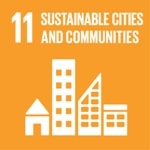The Power of Satellites in Emergency Alerting and Protecting Lives
Global Satellite Operator's Association and International Telecommunication Union
Session 339
Satellites have always been a critical part of disaster management by ensuring communication continuity when terrestrial networks are disrupted. In the age of rapid technological advances, new innovations, such as Direct-to-Device (D2D) communication technologies, allow mobile phones to connect directly to satellites without the need for ground-based cell towers. This session aims to explore the transformative role of satellite technology in enhancing early warning systems and protecting lives during disasters and crises, and to highlight the progress and status of different D2D initiatives. It will showcase the progress and status of different satellite technologies and companies, with a focus on emerging innovations like D2D. Panelists will highlight how these will enhance emergency alerting capabilities, provide real-time situational awareness, and help save lives before disasters occur.






-
 C7. ICT applications: benefits in all aspects of life — E-environment
C7. ICT applications: benefits in all aspects of life — E-environment
The session on "The Power of Satellites in Emergency Alerting and Protecting Lives" directly supports Action Line C7 on e-environment, particularly Goal 3, which focuses on establishing ICT-based systems for disaster risk reduction and monitoring. Satellite technologies play a vital role in enabling early warning systems and helping to ensure that alerts reach communities event in the most remote and vulnerable areas.
-
 Goal 11: Make cities inclusive, safe, resilient and sustainable
Goal 11: Make cities inclusive, safe, resilient and sustainable
-
 Goal 13: Take urgent action to combat climate change and its impacts
Goal 13: Take urgent action to combat climate change and its impacts
This session shows how advanced ICTs, such as satellites, support disaster resilience, climate adaptation, and inclusive infrastructure development, making it a powerful enabler of the SDGs and the broader sustainable development process.